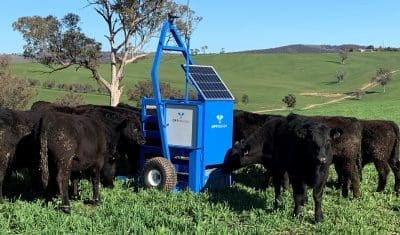Innovative Dashboard to Support Livestock Producers in Emission Reduction
A new project is set to revolutionize the livestock industry by assisting producers in minimizing greenhouse gas emissions while boosting profitability. The initiative involves the development of a digital dashboard designed to display estimates of emissions, primarily focusing on methane, as well as emissions intensity from cattle growth.
This cutting-edge dashboard will be piloted in the upcoming spring, providing livestock producers with an invaluable tool for proactive management of their herds.

Optiweigh in-field weighing systems will play a role in estimating methane emissions and emissions intensity of growing cattle.
Dr. Warwick Badgery, research leader at the NSW Department of Primary Industries and Regional Development, emphasized that the dashboard will estimate emission intensity using data from average daily weight gain, which is provided by Optiweigh’s walk-over weighing units. This data, combined with other farm management information, aims to facilitate better decision-making for producers.
“The tool will enable producers to make informed decisions such as moving animals between paddocks, providing supplementary feed, implementing livestock health interventions, or culling underperforming animals—all to reduce livestock emissions and enhance farm profitability,” Dr. Badgery explained.
“This project offers an innovative and practical avenue for producers to understand and manage their livestock’s emissions, marking a crucial step in reducing environmental impact while improving operational efficiency,” he added.
An essential component of this project involves a grazing trial taking place at Glen Innes, aimed at validating the greenhouse gas emissions predictions made by the dashboard. This trial is a collaborative effort with the Low Methane Beef project.
NSW DPIRD research officer Dr. Flavio Alvarenga highlighted that the trial will compare the dashboard’s estimates with established methods for measuring methane emissions, including direct measurements from Greenfeed methane measurement units.
Additionally, feed intake measurements will be taken using eGrazor collars, which quantify the grazing time of animals, a critical factor since feed intake is strongly correlated with methane production. These measurements will play a pivotal role in verifying the accuracy of the dashboard.
“This project marks a significant advancement towards equipping Australian producers with practical tools to address greenhouse gas emissions profitably and effectively,” Dr. Badgery stated.
The dashboard is being developed under the Primary Industries Productivity and Abatement Program (PIPAP) in collaboration with the NSW DPIRD On-Farm Carbon Advice project.
Source: NSW DPIRD



